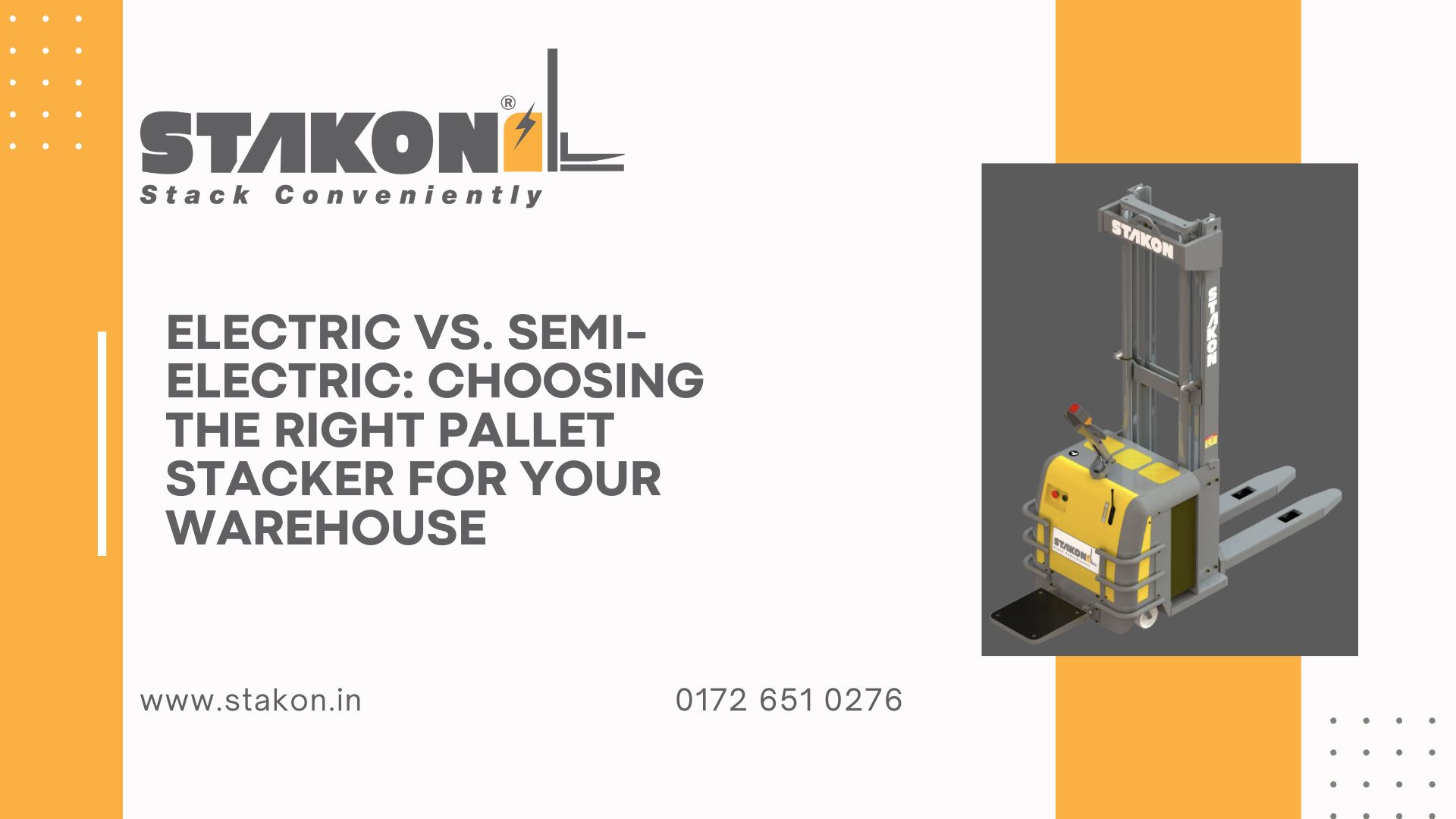Electric vs. Semi-Electric: Choosing the Right Pallet Stacker for Your Warehouse
Efficiently moving and stacking heavy pallets is crucial for smooth operations in any warehouse or distribution center. While manual pallet jacks have been a staple for decades, advancements in technology have introduced powered options that significantly improve productivity and reduce worker strain. This guide focuses on two such solutions: electric pallet stackers and semi-electric pallet stackers. By understanding their differences and considering your specific needs, you can choose the perfect equipment to optimize your material handling processes.
Electric Pallet Stackers: Fully Powered for Maximum Efficiency
Electric pallet stackers are versatile machines designed to lift and move pallets with minimal manual effort. They are powered by an electric motor and battery, allowing operators to raise, lower, and transport pallets with ease.
Key Features:
- Fully Powered Lift and Travel: Both the lifting and horizontal movement are powered by the electric motor, reducing operator fatigue and increasing efficiency.
- Higher Lifting Heights: Can typically reach greater heights compared to semi-electric models, making them suitable for high racking systems.
- Increased Load Capacity: Often have higher load capacities, allowing them to handle heavier pallets.
- Enhanced Safety Features: May include advanced safety features like automatic braking systems and overload protection.
Ideal Applications:
- Warehouses with high racking systems
- Frequent lifting and moving of heavy pallets
- Operations prioritizing speed and efficiency
- Environments where operator fatigue is a concern
Semi-Electric Pallet Stackers: A Balance of Power and Affordability
Semi-electric pallet stackers offer a blend of manual and electric operation. They utilize an electric motor for lifting pallets but rely on manual effort for horizontal movement. This hybrid design provides a cost-effective solution while still reducing operator strain.
Key Features:
- Electric Lift, Manual Travel: The lifting mechanism is powered by an electric motor, while the operator manually pushes or pulls the stacker for horizontal movement.
- Cost-Effective: Generally less expensive than fully electric stackers.
- Maneuverability: The manual movement allows for greater maneuverability in tight spaces.
- Reduced Operator Strain: Electric lifting minimizes the physical effort required to raise pallets.
Ideal Applications:
- Operations with moderate lifting needs
- Warehouses with limited aisle space
- Businesses seeking a balance of affordability and efficiency
- Tasks involving both lifting and transporting pallets over shorter distances
Factors to Consider When Choosing a Pallet Stacker
- Frequency of Use: How often will the stacker be used? For frequent use, a fully electric model might be more efficient.
- Load Capacity: What is the maximum weight of the pallets you need to lift?
- Lifting Height: How high do you need to lift pallets?
- Aisle Space: How much space is available for maneuvering the stacker?
- Budget: What is your budget for purchasing and maintaining the equipment?
- Operator Training: Ensure your operators are adequately trained to safely operate the chosen stacker.
Electric pallet stackers and semi-electric pallet stackers offer significant advantages over manual pallet trucks, improving efficiency, reducing operator strain, and enhancing safety. By carefully considering your specific needs and the key features of each type, you can choose the right equipment to optimize your warehouse operations and boost productivity.
